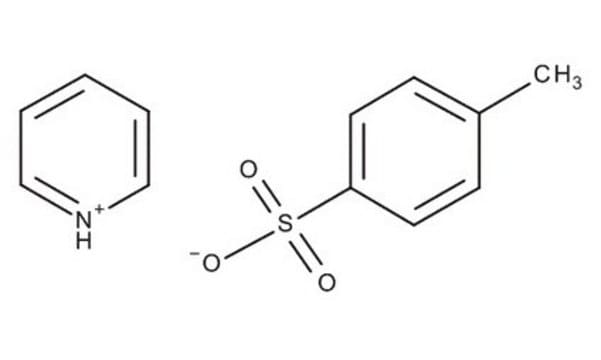936669
DPPF

Synonym(e):
1,1′-Ferrocenediyl-bis(diphenylphosphin)
About This Item
Empfohlene Produkte
Form
solid
Qualitätsniveau
Zusammensetzung
loading, 4-6 wt. %
mp (Schmelzpunkt)
181-182 °C (dec.) (lit.)
SMILES String
[Fe].[CH]1[CH][CH][C]([CH]1)P(c2ccccc2)c3ccccc3.[CH]4[CH][CH][C]([CH]4)P(c5ccccc5)c6ccccc6
InChI
1S/2C17H14P.Fe/c2*1-3-9-15(10-4-1)18(17-13-7-8-14-17)16-11-5-2-6-12-16;/h2*1-14H;
InChIKey
HPXNTHKXCYMIJL-UHFFFAOYSA-N
Suchen Sie nach ähnlichen Produkten? Aufrufen Leitfaden zum Produktvergleich
Allgemeine Beschreibung
Anwendung
- DPPF has been used as a ligand in:
- The ruthenium catalyzed N-alkylation of amines and sulfonamides using borrowing hydrogen methodology.[1] (19191700)
- The cooperative Cu/Pd catalyzed borylallenylation of trifluoromethyl-1,3-enynes to generate conjugated bisallenes.[2] (36321461)
- The cooperative Cu/Pd catlyzed borocarbonylation of ethylene.[3] (36226440)
- The gold catalyzed synthesis of 2-phosphoryl indolin-3-ones.[4] (35815915)
- The iron-catalyzed vinylzincation of terminal alkynes.[5] (34935372) ChemBeads are chemical coated glass beads. ChemBeads offer improved flowability and chemical uniformity perfect for automated solid dispensing and high-throughput experimentation. The method of creating ChemBeads uses no other chemicals or surfactants allowing the user to accurately dispense sub-milligram amounts of chemical.
- For general uses, product is also available in powdered form (177261)
Ähnliches Produkt
Lagerklassenschlüssel
11 - Combustible Solids
WGK
WGK 3
Flammpunkt (°F)
Not applicable
Flammpunkt (°C)
Not applicable
Choose from one of the most recent versions:
Analysenzertifikate (COA)
Sorry, we don't have COAs for this product available online at this time.
If you need assistance, please contact Kundensupport
Besitzen Sie dieses Produkt bereits?
In der Dokumentenbibliothek finden Sie die Dokumentation zu den Produkten, die Sie kürzlich erworben haben.
Unser Team von Wissenschaftlern verfügt über Erfahrung in allen Forschungsbereichen einschließlich Life Science, Materialwissenschaften, chemischer Synthese, Chromatographie, Analytik und vielen mehr..
Setzen Sie sich mit dem technischen Dienst in Verbindung.


![[1,1′-Bis(diphenylphosphino)ferrocen]dichlorpalladium(II)](/deepweb/assets/sigmaaldrich/product/structures/130/734/8846aa26-1858-458a-998d-8c306c13bf0f/640/8846aa26-1858-458a-998d-8c306c13bf0f.png)
![[Pd(OAc)2]3 reagent grade, 98%](/deepweb/assets/sigmaaldrich/product/structures/508/249/99a0ef2c-b77c-4d73-8ed9-0cca05b6b41f/640/99a0ef2c-b77c-4d73-8ed9-0cca05b6b41f.png)




